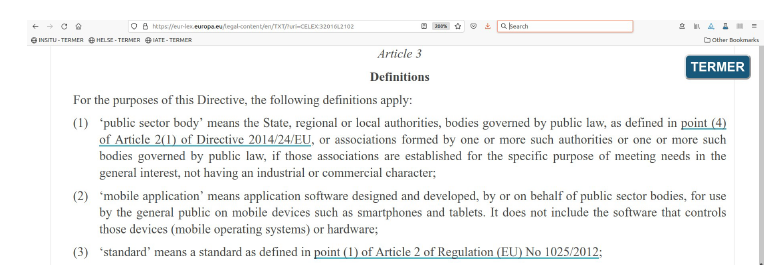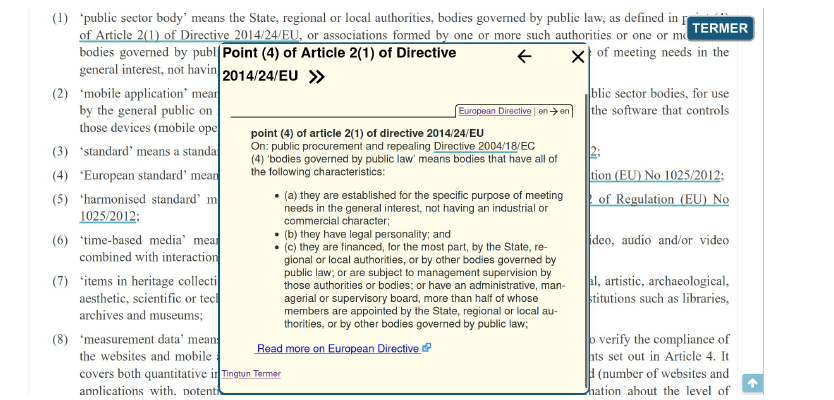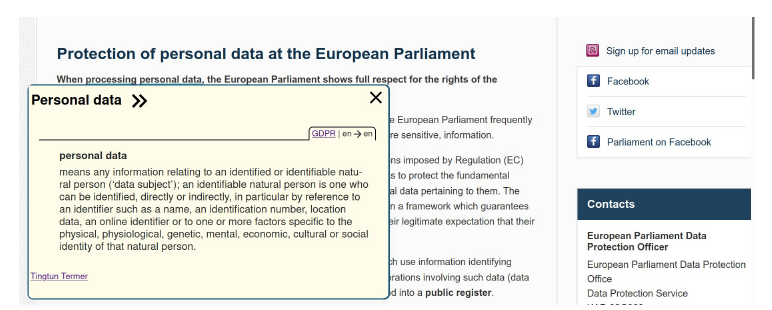Legal texts are often carefully crafted by clever lawyers to be both general and precise. Such texts can be hard to understand for most of us who are not lawyers by profession. Specific legal terminology and the frequent use of references to other legal documents on EUR-Lex and to related national sources can pose insurmountable barriers. Yet access to the law is among the most basic preconditions for citizens to participate in the democratic society across Europe.
To overcome some of these problems a group of researchers from Norway are proposing to explore novel ways to navigate legal content. The tools and ideas have evolved in a sequence of research projects including the eAccess+ project, The European Internet Inclusion Initiative (EIII) and the Mobile Age project.
One approach built on these results are to automatically replace passive references to legal content with active links as shown in Figure 1. The references are found in the Web Accessibility Directive (WAD).

Figure 1: Passive text references provided as links from the Web Accessibility Directive.
When clicked the link shows a window on top of the text with the content of the referenced point as seen in Figure 2. A similar functionality can be applied to references to European Regulations and to documents from other sources such as ETSI standards, shortening the route to access to them for the user.

Figure 2: Example lookup of point in article in directive showing the referenced content on top of the text where the reference is found.
A second approach is to simplify the access to terminology defined in a legal document. For example when reading a text about protection of personal data on the European Parliament portal, the reader may not know the meaning of “personal data” according to GDPR, or that the term is indeed defined in the definitions section of the GDPR, and in IATE. Even if we know it is defined we can save the overhead switching context to find the definition. A simplified lookup is shown in Figure 3.

Figure 3: Example lookup of the definition of “personal data” from GDPR.
Please note that the functionality of Tingtun Termer is designed to meet the requirements of both these directives, meaning the functionality can be provided for users with disabilities and that personal privacy is protected.
The researchers are now seeking to explore ways to extend and supplement these approaches to enable people with disabilities to exercise their legal rights and to cover additional legal portals.
Please contact the TiTi project for further details.

